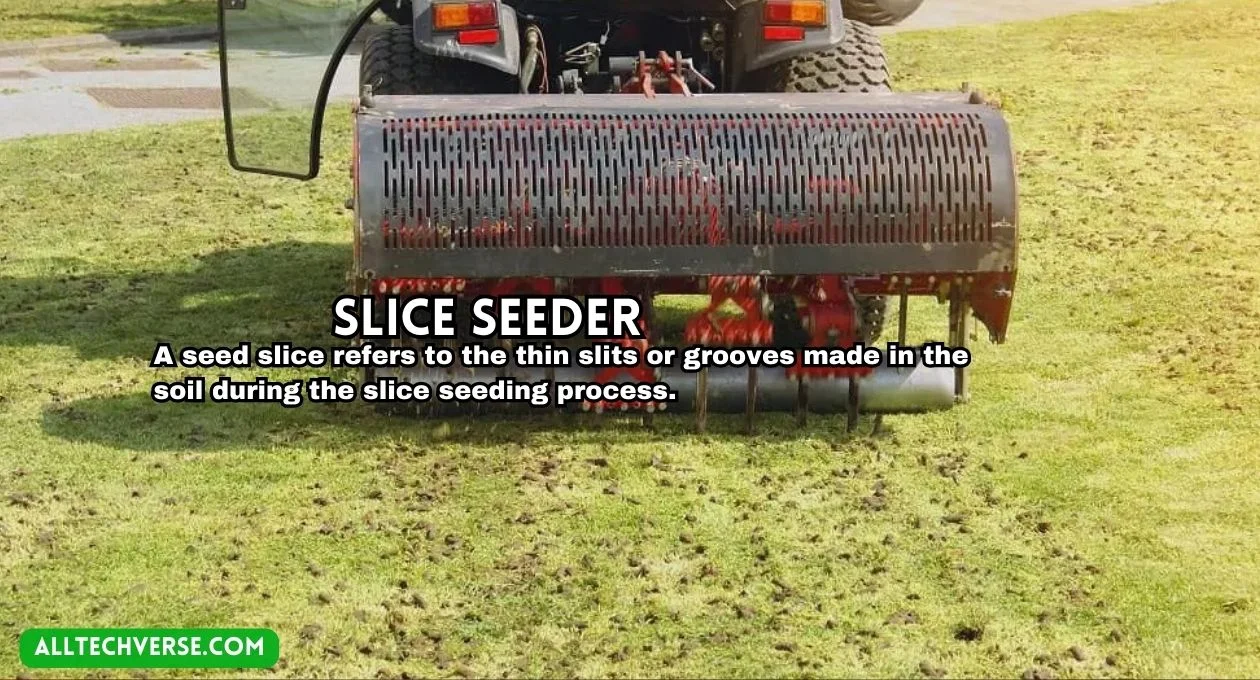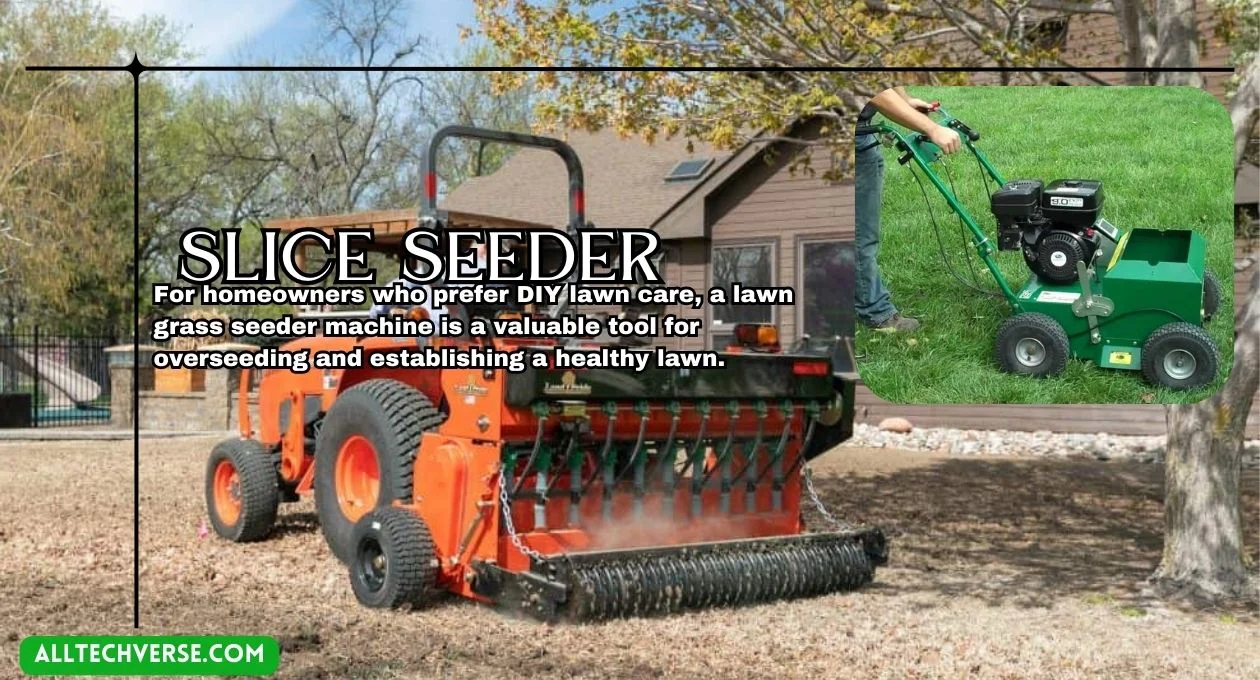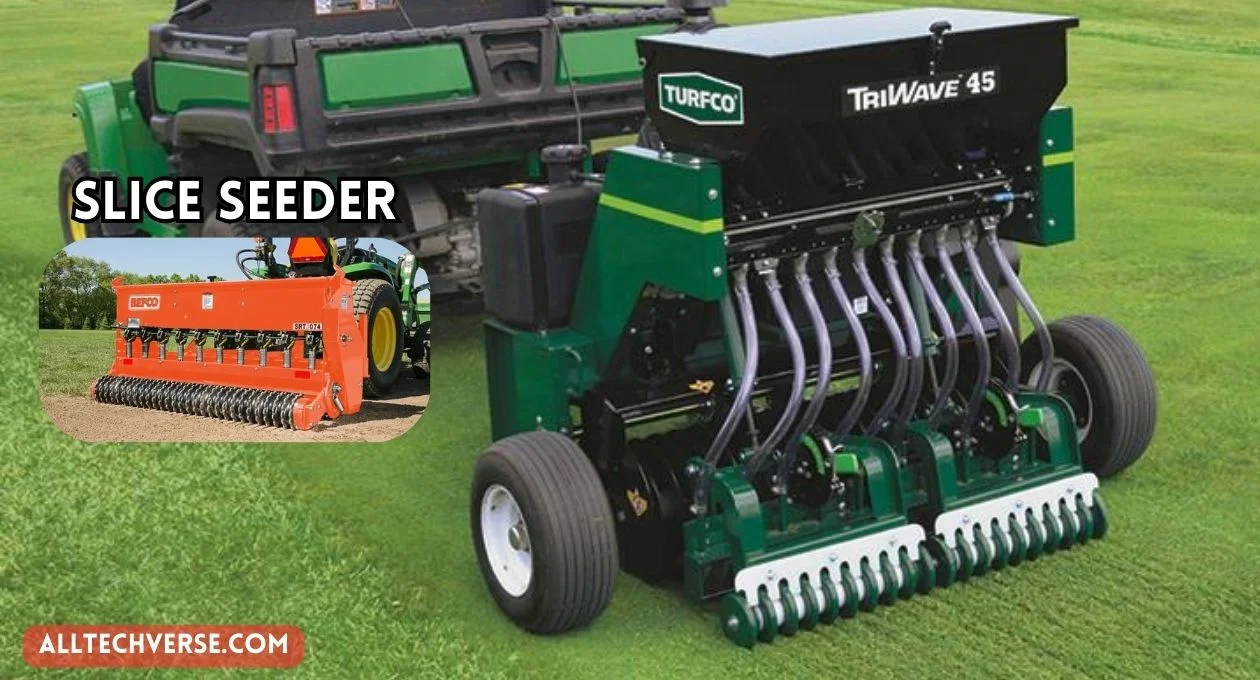When it comes to achieving a lush, healthy lawn or turf, one of the most effective techniques for overseeding and reseeding is using a slice seeder. Whether you’re a homeowner looking to enhance your lawn or a professional landscaper managing large commercial spaces, understanding the different types of seeders and how they work can make a significant difference in the quality of your grass. In this guide, we’ll explore everything you need to know about slice seeders, including their variations, benefits, and where you can rent or purchase one. We’ll also dive into related tools and methods like hydraulic seeders, slit seeders, and even compare hydroseeding vs sod.
Slice seeders are particularly effective for overseeding lawns or repairing bare patches, as they cut small grooves into the soil to ensure excellent seed-to-soil contact. This method promotes better germination rates compared to simply scattering seeds on the surface. By using a slice seeder, you can achieve a more even distribution of grass seeds, resulting in a healthier and denser lawn. Additionally, the process helps reduce soil compaction, allowing roots to grow deeper and stronger.
What is a Slice Seeder?
A slice seeder is a specialized lawn care machine designed to plant grass seeds efficiently by slicing through the soil to create small slits or grooves, then dropping seeds directly into those grooves. This method of seeding allows the seeds to make good contact with the soil, promoting better germination rates compared to traditional broadcasting. Slice seeders are often used for overseeding lawns to improve turf density or for reseeding bare spots caused by weather, pests, or disease.\
Using a slice seeder not only enhances germination but also minimizes seed wastage, making it a cost-effective solution for lawn care. The machine’s efficient slicing action aerates the soil as it works, creating an optimal environment for seedling growth. Additionally, the precise placement of seeds reduces competition from weeds, ensuring healthier and more uniform grass coverage. This makes slice seeders an essential tool for both professional landscapers and homeowners striving for a lush, vibrant lawn.
Slit Seeder: The Technology Behind Slice Seeding
A slit seeder is essentially a machine that performs a similar function to a slice seeder but with a slightly different mechanism. The primary difference is that a slit seeder uses vertical rotating blades (slitting blades) to cut into the soil, making narrow grooves into which seeds are placed. This process is especially beneficial for compacted or hard soils where traditional seeding methods might not work as well.
Advantages of a Slit Seeder:
- More precise seed placement for higher germination success.
- Minimizes seed wastage by ensuring seeds are directly placed in soil slits.
- Better for compacted soils that need aeration.
- The slit seeder is particularly effective in overseeding existing lawns, as it allows seeds to establish contact with the soil while minimizing disruption to the current grass. This method enhances the chances of uniform growth and supports a thicker, healthier lawn over time. By addressing bare patches and weak areas, it ensures a more even distribution of grass coverage, promoting long-term lawn resilience. Its efficiency and precision make it a preferred tool for both home gardeners and professional landscapers.
Hydraulic Seeder: A Different Approach to Seeding
A hydraulic seeder, also known as a hydroseeder, is a different type of seeding machine that mixes seeds with water, mulch, and fertilizers to create a slurry. This slurry is then sprayed onto the soil using a high-pressure hydraulic system. Unlike slice seeders, hydraulic seeders are often used for larger, open areas like construction sites, erosion control projects, or roadside planting.
Advantages of a Hydraulic Seeder:
- Fast and efficient for large-scale seeding projects.
- Can cover difficult terrain or areas that are hard to reach with traditional methods.
- The mulch in the slurry helps retain moisture, which can enhance seed germination.
- This method is particularly effective in promoting uniform seed distribution, ensuring that the seeded area grows evenly and robustly. The combination of seeds, mulch, and fertilizers in the slurry provides an optimal environment for germination and early growth. Hydraulic seeding also minimizes soil disturbance, making it an environmentally friendly option. Additionally, it reduces labor costs and time compared to traditional seeding methods, making it a preferred choice for large-scale projects.
Slit Seeder Rental: Rent a Seeder for Your Lawn Project
If you’re not ready to invest in a slice seeder or slit seeder, renting one can be a cost-effective solution for your lawn care needs. Slit seeder rentals are available at many garden centers, hardware stores, and equipment rental businesses, especially during the spring and fall when overseeding is most common. Renting allows you to use high-end equipment without the upfront investment.
Benefits of Renting a Slit Seeder:
- Lower cost for one-time or occasional use.
- Access to professional-grade equipment for high-quality results.
- No maintenance or storage requirements on your part.
To find a slit seeder rental near me, check with local rental stores or use online platforms that specialize in equipment rentals.
Slit seeding is an effective method for addressing bare spots and thinning grass areas, providing a precise way to introduce new seeds into the soil. By creating small slits in the ground, the seeds are placed directly into contact with the soil, ensuring better germination and growth. This process reduces seed wastage and minimizes the chances of birds or wind carrying seeds away. It’s a go-to solution for homeowners and landscapers seeking a lush, even lawn with minimal effort.
Seed Slice: A Key Part of Slice Seeding
A seed slice refers to the thin slits or grooves made in the soil during the slice seeding process. These slices are essential because they provide a perfect environment for the grass seeds to germinate. The seeds are placed into the slice, which keeps them in direct contact with the soil, ensuring better seed-to-soil contact than broadcast seeding.

Why Seed Slices Matter:
- Better seed-to-soil contact leads to higher germination rates.
- Helps prevent seed washout or wind displacement.
- Ensures the seed gets the moisture it needs to sprout.
- This method also minimizes seed wastage, as seeds are less likely to be lost due to adverse weather conditions or poor distribution. The precise placement of seeds in the soil promotes even growth and creates a lush, uniform lawn. Additionally, the slices allow oxygen and nutrients to penetrate deeper into the soil, supporting the overall health of the grass. With slice seeding, the chances of establishing a strong and vibrant lawn are significantly improved.
Grass Seeder Machine: Essential for Lawn Maintenance
A grass seeder machine is a broad term that can refer to several different types of equipment used to plant grass seeds. This includes slice seeders, slit seeders, and even broadcast seeders. A grass seeder machine helps you apply seeds in a uniform manner, improving coverage and minimizing seed wastage.
Types of Grass Seeder Machines:
- Slice Seeders: For precision seeding in slits.
- Broadcast Seeders: For spreading seeds over large areas.
- Hydraulic Seeders: For spraying seed slurry on large, hard-to-reach areas.
- Hydraulic seeders are particularly useful for areas requiring erosion control or large-scale coverage, as they use a liquid mixture of seeds, mulch, and nutrients to ensure even distribution. This method promotes faster germination and better seed-to-soil contact, especially on uneven or rocky terrain. While they may require more effort to set up and operate, their efficiency and effectiveness make them a preferred option for professional landscaping projects. Additionally, they help reduce soil displacement and improve long-term vegetation establishment.
Hydroseeding vs Sod: Which Is Better for Your Lawn?
Both hydroseeding and sod are popular methods for establishing a new lawn or repairing an existing one, but they differ in their approach and cost. Here’s a quick comparison between the two:
- Hydroseeding: Uses a slurry of seed, water, fertilizer, and mulch, which is sprayed onto the soil. It’s faster and cheaper than sod but requires more time for germination and establishment.
- Sod: Involves laying pre-grown grass onto your lawn. It provides an instant green lawn but is significantly more expensive and labor-intensive.
When to Choose Hydroseeding:
- For larger areas or difficult terrains.
- If you want quicker coverage than traditional seeding.
- When cost is a consideration.
When to Choose Sod:
- If you need instant results and a mature lawn.
- If you have the budget for it and want minimal maintenance during installation.
- Hydroseeding and sod both have their unique advantages, making the choice highly dependent on your specific needs and circumstances. While hydroseeding offers a cost-effective way to cover large areas and is ideal for uneven terrains, sod provides an instantly lush, green lawn with minimal delays. Understanding factors such as budget, time constraints, and the level of labor involved can help ensure the right decision for your landscaping goals. Ultimately, both methods can achieve a beautiful and healthy lawn with proper care and maintenance.
Lawn Grass Seeder Machine: Ideal for Homeowners
For homeowners who prefer DIY lawn care, a lawn grass seeder machine is a valuable tool for overseeding and establishing a healthy lawn. These machines are typically smaller than commercial versions but still effective for residential lawns. They come in a range of models, from walk-behind seeders to tow-behind seeders for larger properties.

Benefits of a Lawn Grass Seeder Machine:
- Helps achieve even seed distribution for uniform grass growth.
- Ideal for homeowners who want a lush, healthy lawn without the cost of professional services.
- Many models are easy to use, even for beginners.
- Using a lawn grass seeder machine also ensures better seed-to-soil contact, which is essential for proper germination. This improves the chances of successful growth, reducing the need for reseeding and saving time in the long run. Additionally, these machines can often handle a variety of seed types, making them versatile tools for different grass species. With proper care and maintenance of the seeder, homeowners can enjoy a consistently healthy and vibrant lawn year-round.
Power Grass Seeder: Maximum Efficiency for Large Areas
A power grass seeder is a powerful, motorized version of a seed spreader or slicer that can cover large areas efficiently. These machines are perfect for commercial turf care professionals or anyone working on large lawns, parks, or sports fields. They can be either walk-behind models or tow-behind machines for riding lawnmowers or tractors.
Advantages of a Power Grass Seeder:
- Ideal for large-scale turf projects.
- High-efficiency spreading and slitting capabilities.
- Can handle more difficult soils and tougher terrains.
- Power grass seeders also offer precise seed placement, ensuring even distribution and improved germination rates. This precision minimizes seed wastage and promotes healthier, denser grass growth over time. Additionally, their robust build and adaptability to various terrains make them a
- a reliable choice for landscapers and agricultural professionals alike. These machines reduce manual labor significantly, allowing projects to be completed faster and with greater consistency. Furthermore, their ability to operate effectively on challenging terrains enhances their versatility for diverse applications. With proper maintenance, power grass seeders can provide long-lasting performance, making them a valuable investment for large-scale seeding needs.
Slice Seeding Lawn: How It Works
Slice seeding a lawn is one of the most effective ways to rejuvenate an old lawn or repair bare spots. The process involves using a slice seeder or slit seeder to create small slits in the soil, through which seeds are dropped. The process is typically done in the fall or early spring for optimal results.
Steps for Slice Seeding Your Lawn:
- Mow the lawn to a shorter height and remove any debris.
- Use a slice seeder to create slits in the soil, ensuring the seeds make direct contact with the ground.
- Water the lawn regularly to keep the soil moist and help with seed germination.
- Fertilize and aerate as needed to promote healthy grass growth.
Over time, ensure you monitor the progress of seed germination and growth, adjusting care routines as necessary. Avoid heavy foot traffic on the lawn during this period to prevent damage to the emerging grass. Consistent watering, especially during dry spells, will further enhance the seed’s ability to establish strong roots. Patience is key, as it may take several weeks for the lawn to fully recover and showcase a thick, vibrant appearance.
FAQs
Q1: How often should I water the newly seeded lawn?
A1: Newly seeded lawns should be watered lightly but consistently to keep the soil moist without over-saturating it. Aim to water 1-2 times daily during the first few weeks, especially if the weather is dry or hot.
Q2: When can I start mowing the new grass?
A2: You can start mowing the grass once it has reached a height of around 3-4 inches. Be sure to use a sharp mower blade and avoid cutting more than one-third of the grass height in a single mowing.
Q3: Can I walk on the lawn while the seeds are germinating?
A3: It’s best to minimize foot traffic on the lawn during the germination and early growth stages. Excessive walking can damage dormant seeds or fragile sprouts, impeding healthy development.
Q4: When should I apply fertilizer to the newly seeded lawn?
A4: A starter fertilizer can be applied at the time of seeding to encourage root development. Afterward, wait at least 4-6 weeks before applying additional fertilizer, and ensure it’s appropriate for new grass.
Q5: How long does it take for the grass to fully establish?
A5: Depending on the type of grass and environmental conditions, it can take anywhere from 6 weeks to several months for the lawn to fully establish. Regular care and maintenance will help ensure success.
Conclusion
A slice seeder is a game-changing tool for anyone looking to improve their lawn or turf. Whether you’re overseeding a residential lawn, tackling a commercial project, or deciding between hydroseeding vs sod, understanding your options and knowing how to rent or purchase the right equipment can make your job much easier. From slit seeders to hydraulic seeders and power grass seeders, there’s a machine for every need. With the right equipment and techniques, you’ll have a vibrant, healthy lawn in no time!
Using proper watering practices is crucial for successful grass growth after seeding. Water the area lightly and frequently to keep the soil consistently moist but not overly saturated. Gradually adjust the watering schedule as the grass starts to grow, allowing the roots to deepen and establish. Consistency and attention during this phase will greatly influence the long-term health of the lawn.
For More Information Keep Visiting AllTechVerse.



